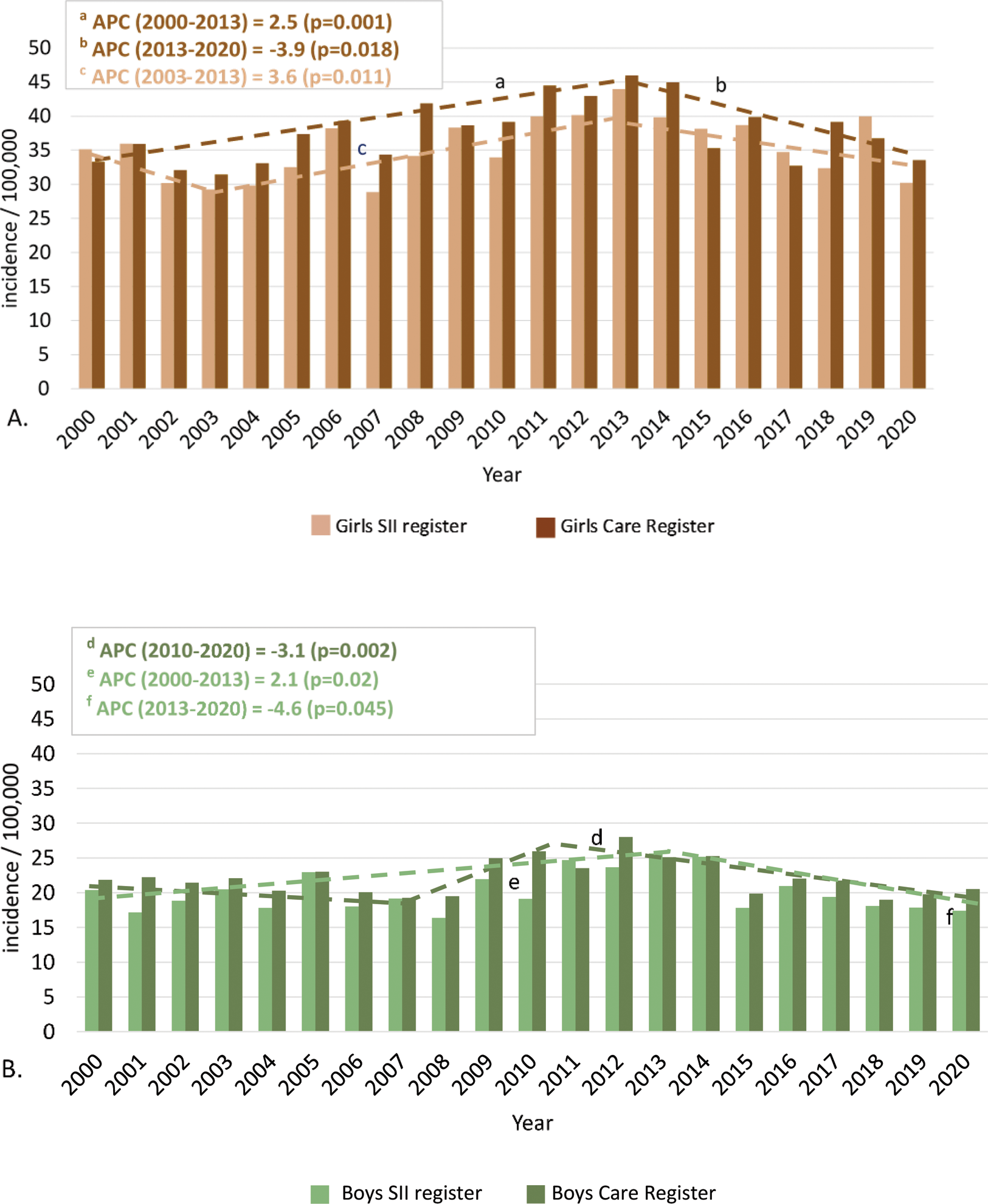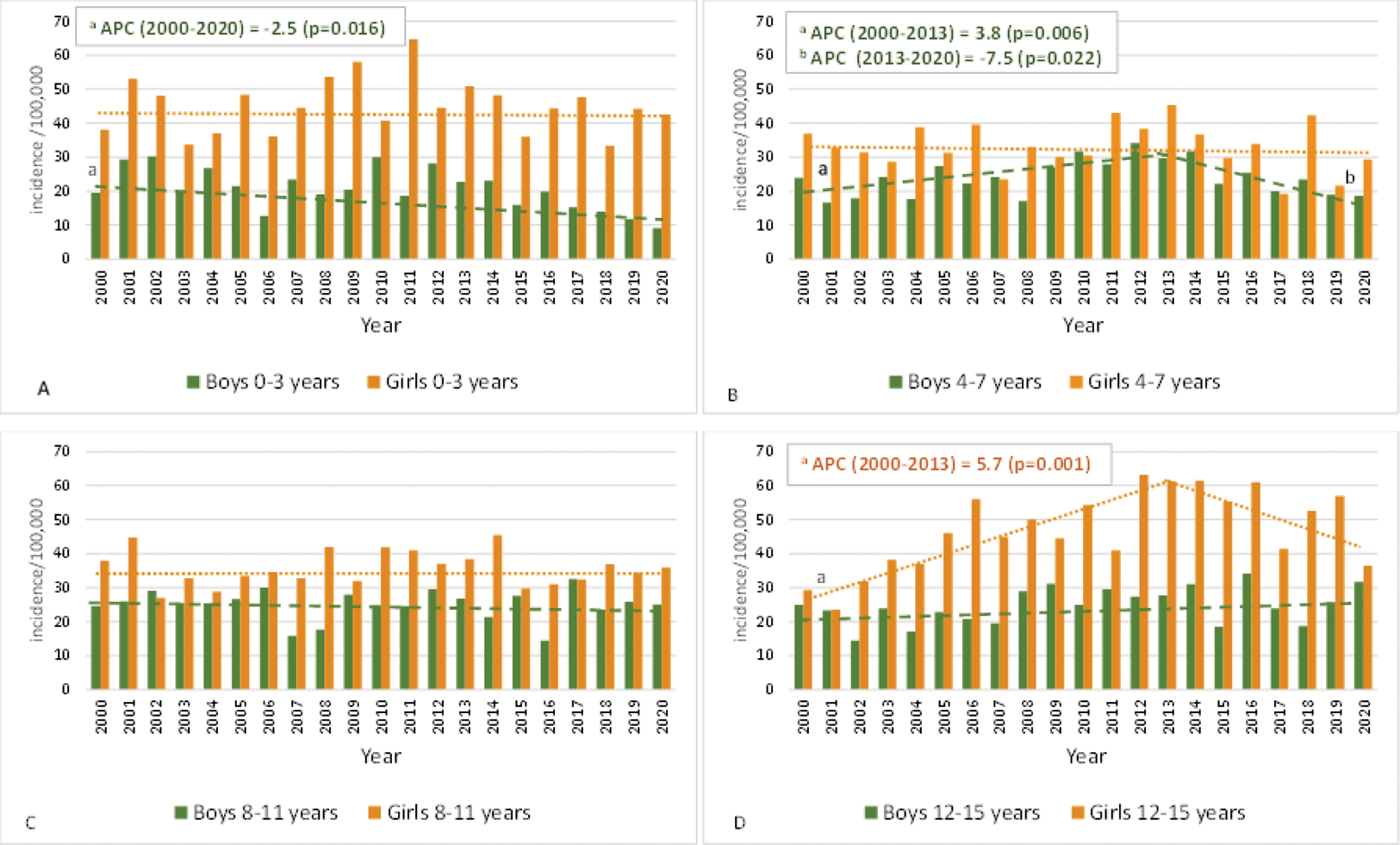

Background: Juvenile idiopathic arthritis (JIA) is an inflammatory disorder of unknown etiology beginning under the age of 16 and characterized by at least one inflamed joint persisting more than six weeks [1]. Although JIA is the most common rheumatic disease in childhood [1], it is a relatively rare disease, and therefore, long-term studies are needed to determine the disease burden and to plan health care resources.
Objectives: The last epidemiological data of JIA in Finland is from the turn of the millennium. We aimed to determine the current annual incidence of JIA during several consecutive years in Finland and to explore the difference in the incidence between genders, age groups, and regions.
Methods: We analyzed all children < 16 years of age who met the International League of Associations for Rheumatology classification criteria for JIA. Cases were selected from the years 2000-2020 from two national registers, the Care Register of National Institute for Health and Welfare and the Reimbursement register regarding medication of the Social Insurance Institution of Finland, and from the years 2016-2020 also from The Finnish Rheumatology Quality Register. Population data were obtained from the Statistics Finland. The incidence rates with 95% confidence intervals (95% CIs) were calculated by dividing the number of new JIA diagnoses by the total population at risk during the study period, and they were expressed per 100,000 children younger than 16 years. The joinpoint regression analysis in logarithmic scale was used to detect increasing or decreasing trends in incidence over segments of follow-up time.
Results: The incidence of JIA was 31.7/100,000 (95% CI 30.2-33.1/100,000) according to Care Register during the years 2000-2020, with a peak in 2010-2014 (Figure 1). No considerable differences in incidence rates were observed between the registers. Girls predominated boys in all age groups, with incidence peaks in 2-year-olds and 14-15-year-olds. A decreasing incidence was observed among boys 0-3 years old during the whole study period and an increasing incidence among teenaged girls and boys 4-7 years old from 2000 to 2013 (Figure 2).
Annual incidence of JIA among children in Finland. Annual incidence rates of JIA/100,000 children < 16 years of age among girls (A) and boys (B). Joinpoint analysis describes changes in incidence rates during 2000-2020 in the Care Register of National Institute for Health and Welfare (Care Register) and The Reimbursement register of Social Insurance Institution (SII register) of Finland. Segments (dotted lines) with statistically significant Annual Percent Change (APC) are marked a-f.

Changes in incidence of JIA in different ages. Incidence rates/100,000 among boys and girls in different age groups during the study period in the Care Register of National Institute for Health and Welfare. Age groups 0-3 years old (A), 4-7 years old (B), 8-11 years old (C) and 12-15 years old (D). Joinpoint analysis shows statistically significant changes among boys 0-3 (A) and 4-7 (B) years old and among girls 12-15 years old (D). Segments (green dotted lines for boys and orange for girls) with statistically significant Annual Percent Change (APC) are marked with a and b.

Conclusion: The incidence of JIA in Finland is very high compared to data from other parts of the world and higher than previously reported in Finland [2]. The incidence also varies by regions in Finland. The incidence varied, but it was not higher at the end of the study period compared to the beginning.
REFERENCES: [1] Thierry S, Fautrel B, Lemelle I, Guillemin F. Prevalence and incidence of juvenile idiopathic arthritis: A systematic review. Jt Bone Spine. 2014 Mar;81(2):112–7.
[2] Berntson L, Andersson Gäre B, Fasth A, Herlin T, Kristinsson J, Lahdenne P, et al. Incidence of juvenile idiopathic arthritis in the Nordic countries. A population based study with special reference to the validity of the ILAR and EULAR criteria. J Rheumatol. 2003 Oct;30(10):2275–82.
Acknowledgements: NIL.
Disclosure of Interests: None declared.